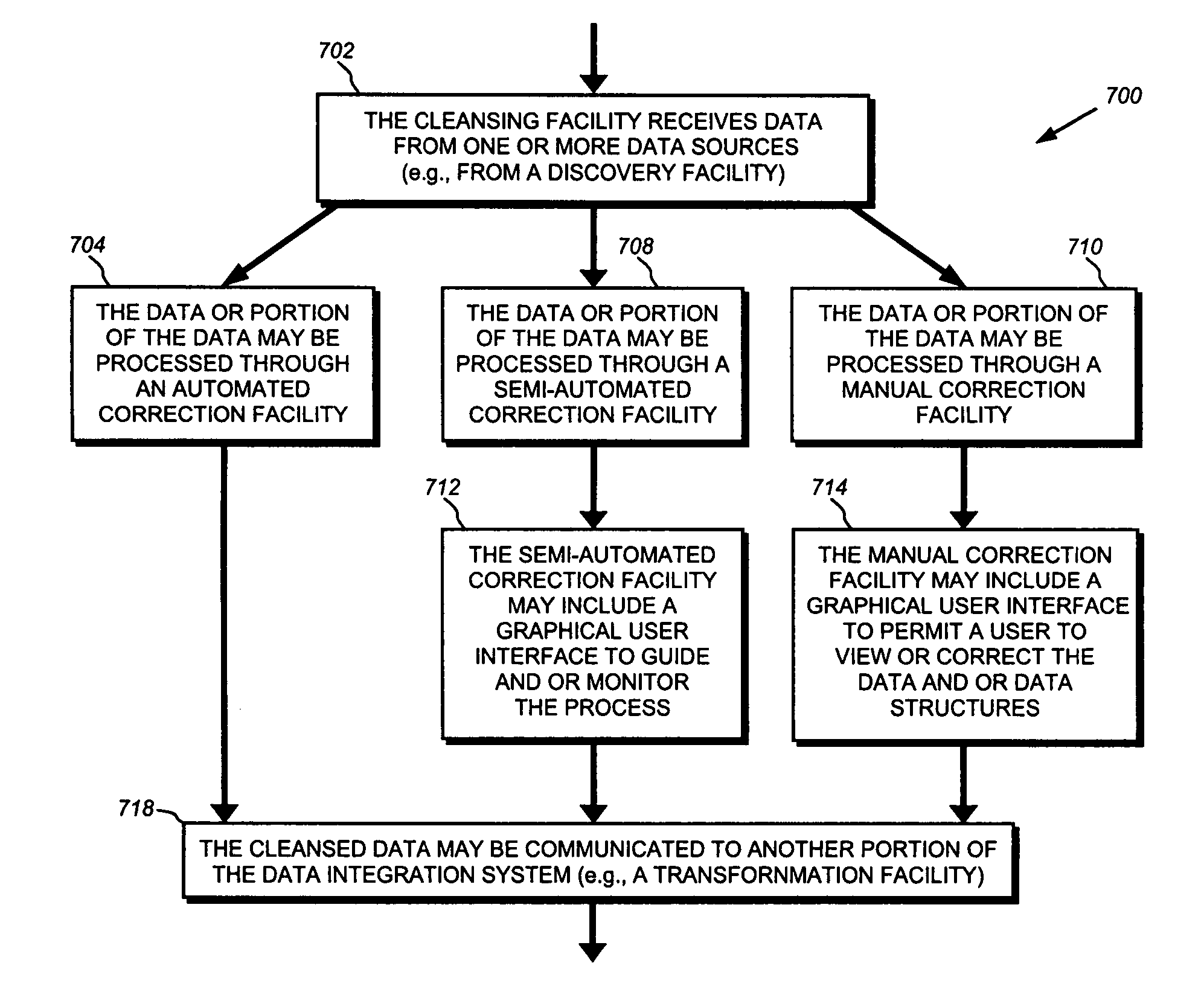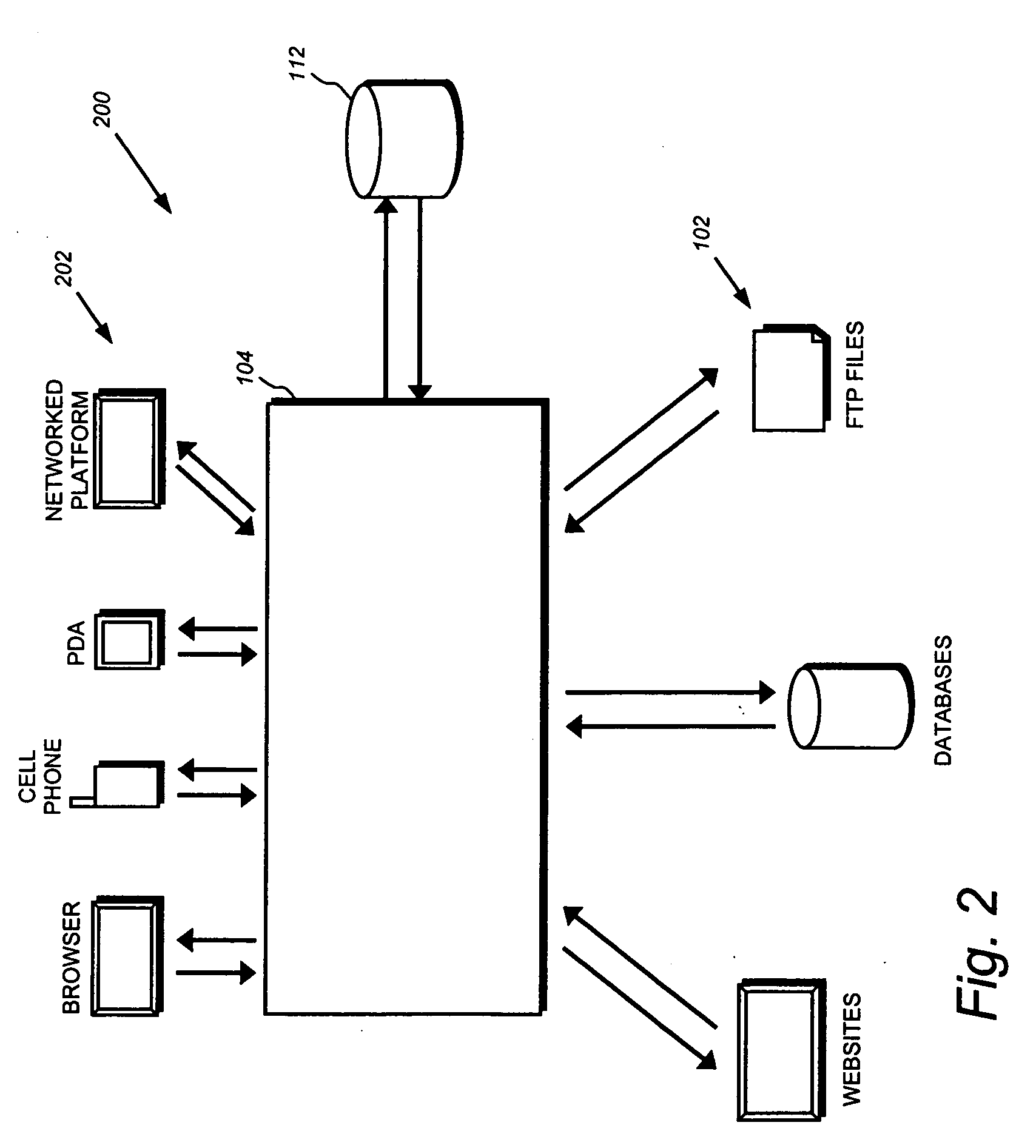Services oriented architecture for handling metadata in a data integration platform
a data integration platform and metadata technology, applied in the field of information technology, can solve the problems of inefficiency, proliferation, and large complexity of the information technology infrastructure of the typical business enterprise, and achieve the effects of facilitating data synchronization, facilitating interfaces, and facilitating data synchronization
- Summary
- Abstract
- Description
- Claims
- Application Information
AI Technical Summary
Benefits of technology
Problems solved by technology
Method used
Image
Examples
Embodiment Construction
[0194] Throughout the following discussion, like element numerals are intended to refer to like elements, unless specifically indicated otherwise.
[0195]FIG. 1 represents a platform 100 for facilitating integration of various data of a business enterprise. The platform includes a plurality of business processes, each of which may include a plurality of different computer applications and data sources. The platform may include several data sources 102, which may be data sources such as those described above. These data sources may include a wide variety of data types from a wide variety of physical locations. For example, the data source may include systems from providers such as such as Sybase, Microsoft, Informix, Oracle, Inlomover, EMC, Trillium, First Logic, Siebel, PeopleSoft, IBM, Apache, or Netscape. The data sources 102 may include systems using database products or standards such as IMS, DB2, ADABAS, VSAM, MD Series, UDB, XML, complex flat files, or FTP files. The data sourc...
PUM
| Property | Measurement | Unit |
|---|---|---|
| volumes | aaaaa | aaaaa |
| time | aaaaa | aaaaa |
| user interface | aaaaa | aaaaa |
Abstract
Description
Claims
Application Information
 Login to View More
Login to View More - R&D
- Intellectual Property
- Life Sciences
- Materials
- Tech Scout
- Unparalleled Data Quality
- Higher Quality Content
- 60% Fewer Hallucinations
Browse by: Latest US Patents, China's latest patents, Technical Efficacy Thesaurus, Application Domain, Technology Topic, Popular Technical Reports.
© 2025 PatSnap. All rights reserved.Legal|Privacy policy|Modern Slavery Act Transparency Statement|Sitemap|About US| Contact US: help@patsnap.com



